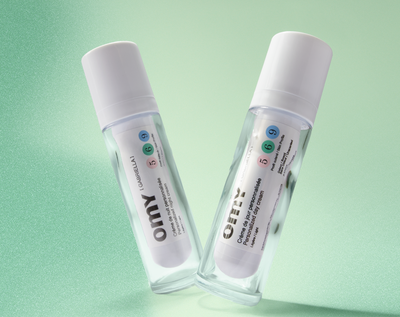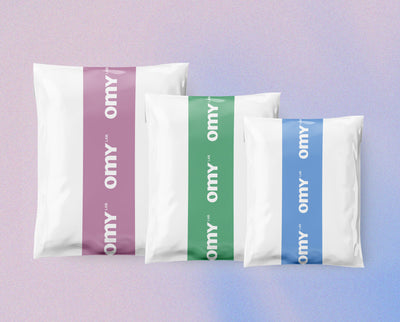Exfoliation 101: Physical, Chemical and Enzymatic

If you're looking for a way to maximize the effectiveness of your skincare routine, look no further! Exfoliation is the key step not to skip in your routine. In addition to smoothing the texture of your skin, exfoliation will maximize the effectiveness of your routine by improving the penetration of your active ingredients.
Types of exfoliation fall into three categories: physical, chemical, and enzymatic. But what are the differences? And how do you choose the right exfoliator for your skin? For the answers to these questions and more, here is your 101 guide to the 3 types of exfoliation.
Why Exfoliate Your Skin?
The skin is covered with a thin protective layer of dead cells that naturally shed from the skin over time. But sometimes this layer becomes too thick, giving a rough texture to the skin.
Exfoliation helps remove dead cells from the surface of the skin, resulting in healthier looking skin. In addition to improving the uniformity of the complexion, it also facilitates the penetration of the active ingredients, increasing their effectiveness.
With aging, the regeneration process of the skin slows down, leading to a duller and rougher complexion. Chemical and enzymatic exfoliants can reverse this phenomenon thanks to their anti-aging properties which allow them to accelerate the regeneration of the skin.
The 3 Types of Exfoliation
Physical Exfoliation
Physical exfoliation, also called mechanical, removes dead skin cells by friction. It can be done with scrubs containing small particles, including grains of sugar or salt, jojoba beads or crushed shells, or with devices including microdermabrasion and brushes.
Chemical Exfoliation
Chemical exfoliation uses acids that loosen the dead cells between them to allow them to detach from the skin. Chemical exfoliants are formulated as creams, chemical peels, gels or solutions.
Types of chemical exfoliants fall into three classes: alpha hydroxy acids (AHAs), beta hydroxy acids (BHAs), and poly hydroxy acids (PHAs):
- AHAs
- BHAs
- PHAs
To learn how to choose your chemical exfoliant, refer to this article. Chemical exfoliants can sensitize the skin to the sun, so daily application of sunscreen when using them is highly recommended!
Enzymatic Exfoliation
Enzymatic exfoliation works similarly to chemical exfoliation. But rather than using acids, this type of exfoliation uses enzymes, a kind of protein, which cut the links between dead skin cells.
Enzymatic exfoliation promotes and accelerates skin regeneration, then facilitates the penetration of active ingredients (4). The main plant enzymes used for enzymatic exfoliation are papain from papaya, bromelain from pineapple and ficin from the fig tree.
Triple exfoliation: a 3-in-1 solution!
What Type of Exfoliation to Choose?
Your choice of exfoliator will be guided by your skin concerns, your skin type and your skin's sensitivity.
Rough Texture
A dull and rough complexion can be corrected with the 3 types of exfoliation. A physical exfoliation provides an immediate effect since it takes off the dead cells by friction. Chemical and enzymatic exfoliants exfoliate more slowly, but also work deeper, which ultimately provides longer lasting effects.
Imperfections and Acne
Salicylic acid, a BHA, is great for preventing the appearance of blemishes and for treating acne. Its ability to deeply unclog pores makes it the perfect ally to fight blemishes!
Adding a cleanser containing salicylic acid (BHA) to your skincare routine is great for preventing the appearance of blemishes. Omy's BHA Cleansing Foam contains salicylic acid and goji berry extract to clarify and even skin tone, one cleanse at a time.
Hyperpigmentation and Wrinkles
Chemical (AHA) and enzymatic exfoliants are ideal for reducing the appearance of dark spots and wrinkles. AHAs, especially glycolic acid, are particularly known to reduce the appearance of dark spots and wrinkles (2). As these scrubs can sensitize the skin to the sun, don't forget to put on your sunscreen daily!
Sensitive Skin
To exfoliate sensitive skin, it is best to avoid the use of AHAs which can sometimes be irritating. Mechanical, enzymatic or even PHA exfoliation are better suited for sensitive skin.
Dry Skin
Dry skin can greatly benefit from chemical exfoliants, especially AHAs and PHAs. These exfoliating acids allow moisturizers to better penetrate and hydrate the skin, helping to comfort even the driest skin.
Combination to Oily Skin
Salicylic acid, a BHA, is the best ally for combination skin to oily skin! Its ability to perform deep pore cleansing allows it to remove any excess sebum, preventing the appearance of pimples.
If in Doubt, Contact Us
Exfoliation can really help maximize the effectiveness of skincare. However, since exfoliation removes a thin layer of protection from the skin, you have to be careful not to over-exfoliate your skin. If your skin becomes more sensitive than usual, you may have over-exfoliated your skin. In this case, reduce your frequency of exfoliation. After all, the purpose of exfoliation is to support your skin in its natural renewal process, not to damage it!
It can be difficult to navigate through all the information available about exfoliation. We invite you to make an appointment with a skin expert for a skin check-up over the phone.




